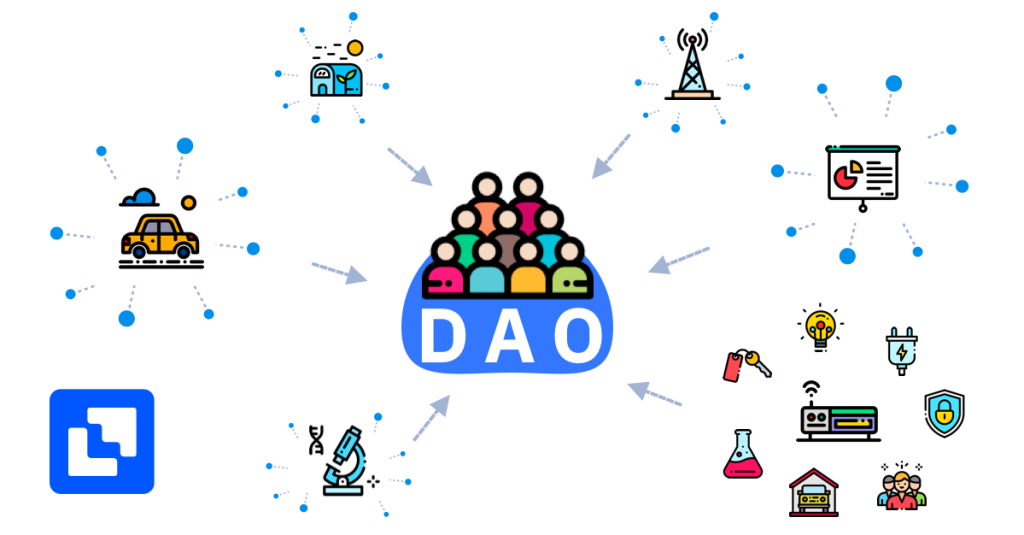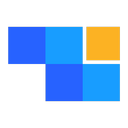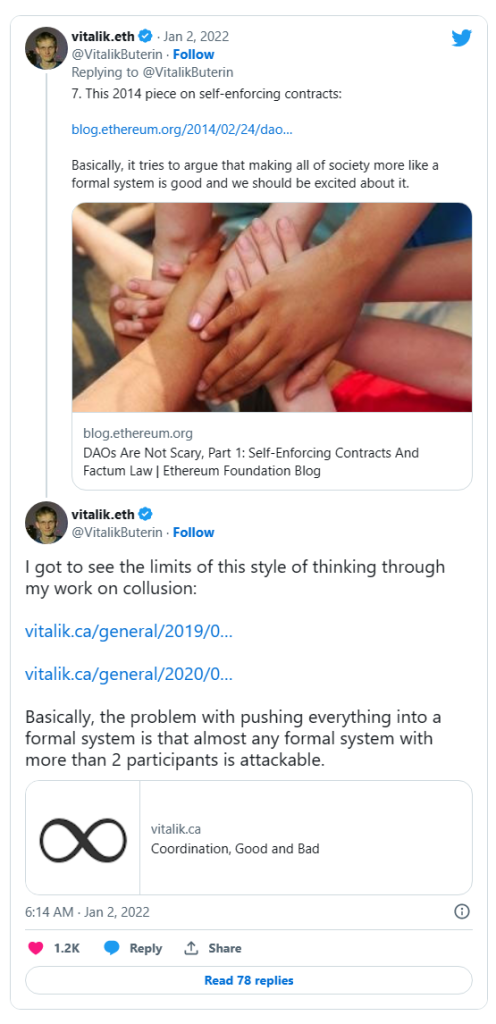What’s a DAO
-
 by ZKE Research
by ZKE Research
With so much focus on price and speculation it is easy to lose sight of the fact that crypto is introducing groundbreaking technologies and ideas. The concept of decentralisation underpins completely new ways of exchanging value – as internet money, DEFI or NFTs – but it also provides the potential for completely new ways to make decisions. This might lead to the reinvention of traditional approaches to running companies and even countries. Meet the DAO – decentralised autonomous organisation.

What is a DAO?
Crypto may have successfully grown to a trillion dollar industry in just over a decade, but a lot of that spectacular success is shrouded in mysterious acronyms and ideas. DAOs are a case in point.
A DAO is a decentralised autonomous organisation. Translated into simpler terms, a DAO is a way of making decisions without putting someone in charge, instead it uses governance backed by technology and financial stake.
If you ranked the problems that plague society, the necessary evils of centralised authority would likely feature somewhere near the top. Faith in politics and politicians is rock bottom, while large corporations are considered untrustworthy or self-serving.
In fact the Edelman Trust Barometer shows that none of the four key pillars of society – government, business, NGOs or media – are trusted.
The 2021 Edelman Trust Barometer reveals an epidemic of misinformation and widespread mistrust of societal institutions and leaders around the world. Adding to this is a failing trust ecosystem unable to confront the rampant infodemic, leaving the four institutions—business, government, NGOs and media—in an environment of information bankruptcy and a mandate to rebuild trust and chart a new path forward – Edelman.com
The Learn Crypto blog doesn’t have enough bandwidth to fully unpack the reasons why, but it centres on the necessity for power to be delegated to a minority of decision-makers who tend not to act in the best interests of those they represent.
A decentralised autonomous organisation uses technology to automate processes for reaching consensus. The rules defining how decisions get made are known as governance.
They are reduced to logical arguments, expressed mathematically into Smart Contracts running on blockchains. The use of blockchains ensures that the governance cannot be changed, except by agreement of all participants – who hold a financial stake through tokens – participating in the agreed governance process.
DAOs use technology to flatten hierarchies, and make decision-making a community process where contributors have skin-in-the-game, voting in relation to the size of their financial stake in the DAO.
Though the capability that enables DAOs – distributed blockchains – are no more than a decade old, the origins are much, much older.
The origins of DAOs
Modern nation states as we know them, centred around a single seat of power – like a government or monarchy – are only a few hundred years old. The invention of gunpowder, and the development of military machinery that followed, changed the scale of power that wealth conferred.
Where previously dominant empires were those that had the most disciplined, loyal or effective armies, gunpowder enabled armies to become more powerful simply because of wealth,
Society was otherwise run at the tribal level, with various examples of progressive approaches to decision making, that were effective on a small scale. DAOs can be seen as the modern evolution of those methods of self-organisation, such as tribal councils.
Given crypto’s association with mining, it is interesting to look, for example, at how isolated mining communities that spontaneously emerged around new sources of precious minerals self-organised to make decisions.
Gold, silver and diamonds were often discovered in remote locations, far beyond the reach of recognised authority, and attracted a melting pot of nationalities, living in extremely challenging environments, all scrambling to find their fortune.
The fact that so-called Mining Councils established workable codes of practice in those conditions, without hierarchy, is a testament to what can be achieved. Though things didn’t always go without a hitch.
Cooperatives also provide some inspiration for the community principles of DAOs, given they are owned and controlled by their members and are there to serve their shared needs. Despite the noble intentions, Coops still need a formal hierarchy in order for decisions to be made and the organisation to run.
DAOs can be seen as attempts to create a headless organisation, modelled on existing examples of self-organisation, but with the benefit that blockchain technology brings in dispersed but coordinated decision-making power.
How does a DAO work?
DAOs inevitably begin as a single idea or objective from somewhere or someone, so have to evolve from being centralised around those founders, into a community run initiative. How that evolution happens, and the broader Community functions is set out in a set of rules – the Governance.
Given DAOs are rooted in crypto, most of those created to date revolve around how to control, manage and grow financial entities, but the principle can be applied in any context.
Governance must be able to be expressed mathematically., which enforces a logical and objective framework The maths is then codified into something called a Smart Contract. Turing complete blockchains, like Ethereum, can execute the Smart Contracts so long as they are written in a programming language called Solidity.
Given their decentralised nature of blockchains like Ethereum, once a Smart Contract is committed, no single entity can unilaterally change it, except by participating in the Governance process.
The few functioning DAOs – so far – revolve around speculation, so the right to participate in governance is proportional to financial commitment, expressed in the form of governance tokens, along with the rights assigned to those that build the technology.
DAO communities can suggest changes to the rules, but they have to be submitted via the agreed proposal process and be voted on by all token holders.
DAOs attempt to enable a new form of technocratic democracy, and though that is a wonderful ideal, are not without their teething problems.
This can be because founders are allowed to exert disproportionate voting power, or because few token holders can’t be bothered to participate, mirroring the apathy that exists with traditional voting systems.
Example DAOs & their teething problems
The cryptocurrency Dash, created as a fork of Bitcoin in 2014, is run via a DAO. Dash masternodes perform the normal node functions in storing a copy of the Dash blockchain, as well as relaying and validating transactions, but also confer the right to vote on changes to how Dash functions.
You have to have skin in the game to be a masternode; 1,000 Dash tokens to be exact, with votes in proportion to the amount of tokens above that threshold.
Given the way in which Dash was originally distributed, there is a concentration of voting power within a few masternodes, who have effective power over its future.
The Ethereum DAO is probably the most famous example of a decentralised autonomous organisation, but for all the wrong reasons. It was formed to manage venture capital from ETH holders, who contributed the equivalent of 14% of all Ethereum in existence at the time.
The project was stillborn, as a vulnerability in its Smart Contract enabled someone to maliciously drain the funds. This generated an ethical discussion among the Ethereum community as to whether to accept the loss as the execution of the code, even though not as intended, or to rewrite history and reclaim the funds, compromising the underlying principle of decentralisation and code as law.
The latter path was chosen, forking Ethereum into two entities, Ethereum (the dominant version removing the funds from the hack) and Ethereum Classic (which accepted the exploit).
In 2017 the MakerDAO project was launched, with the intention of creating a decentralised Stablecoin – Dai – with a value pegged to the US dollar, via Smart Contracts.
Dai is generated from over collateralised deposits of Ether, and burned once it is repaid, plus interest. So Dai is essentially backed by the US Dollar value of the collateral.
The system is governed by a DAO where owners of the MKR token get to vote on changes. Though MakerDAO is seen as one of the most successful and interesting examples of a DAO, it has faced challenges.
The community have been split on whether to be more regulated, and therefore expand into more traditional forms of collateral, while the value of Dai was hit by the impact of the Covid 19.
The extreme volatility that the announcement of the worldwide pandemic caused to the price of Ethereum, led to unforeseen consequences within the complex workings of the MakerDAO system, the loss of over $6million and a ton of credibility.
The DAO struggled to reach consensus on how governance should be updated to stop a repeat, and to try and compensate for the loss.
Despite the problems associated with early DAOs, multiple DEFI projects are now governed by them, and are developing principles not just for growing their ecosystem, but dealing with the ongoing problem of hacks and how to compensate for loss.
There is also a growing movement toward DAOs being used to mobilise collectives on the fly, such as was seen in the attempt to buy a copy of the US Constitution in an Sotheby’s auction, in November 2021.
The ConstitutionDAO emerged spontaneously, raising $47million dollars in Ethereum, and trying to establish rules on the fly around how much to bid, and what would happen if they succeeded.
Though raising the funds was a huge achievement, the exercise exposed the age-old difficulties of aligning, and dealing with the influence that large single contributors would have on governance, given that DAOs are permissionless.
DAOs have to begin from a central point, with decentralisation evolving progressively, but not without pain.
Though it ultimately failed, the ability to jump from meme to multi-million dollar fund in such a short space of time, will inevitably inspire others to repeat the attempt at direct democracy. They have the potential to quickly mobilise communities and pressure groups try to solve seemingly intractable social problems by combining citizen action and crowdfunding.
“The most fun description I’ve heard is that a DAO is a group chat with a bank account. Essentially, what a DAO lets you do is have this very lightweight organizational structure to be able to move around assets and interact with the world.” – Jonah Ehrlich, founder of ConstitutionDAO
There are numerous live DAO projects with diverse objectives from trying to resurrect Blockbuster, to trying to buy a links golf course.
Expect disparate groups to try and buy a major league sports team, start single issue political groups or even buy out businesses where they disagree with their model, but don’t expect them to run smoothly or save democracy just yet.
With so much focus on price and speculation it is easy …

